I would like to resize the columns width when the user zoom on my chart. Could you suggest any method or option? I searched through the documentation but I didn't find any solution. Until now I tried by changing the bar width percentage, the responsive option and the stroke width. The stroke has the side effect of overlapping the bars but I need them separate
Before Zoom
After Zoom actual behaviour
After Zoom desired behaviour
Code used until now
<!DOCTYPE html>
<head>
<meta charset="UTF-8" />
<meta name="viewport" content="width=device-width, initial-scale=1.0" />
<meta http-equiv="X-UA-Compatible" content="ie=edge" />
<title>Bar with Custom DataLabels</title>
<link href="../../assets/styles.css" rel="stylesheet" />
<style>
#chart {
max-width: 650px;
margin: 35px auto;
}
</style>
<script>
window.Promise ||
document.write(
'<script src="https://cdn.jsdelivr.net/npm/promise-polyfill@8/dist/polyfill.min.js"><\/script>'
);
window.Promise ||
document.write(
'<script src="https://cdn.jsdelivr.net/npm/eligrey-classlist-js-polyfill@1.2.20171210/classList.min.js"><\/script>'
);
window.Promise ||
document.write(
'<script src="https://cdn.jsdelivr.net/npm/findindex_polyfill_mdn"><\/script>'
);
</script>
<script src="https://cdn.jsdelivr.net/npm/apexcharts"></script>
<script>
// Replace Math.random() with a pseudo-random number generator to get reproducible results in e2e tests
// Based on https://gist.github.com/blixt/f17b47c62508be59987b
var _seed = 42;
Math.random = function () {
_seed = (_seed * 16807) % 2147483647;
return (_seed - 1) / 2147483646;
};
</script>
</head>
<body>
<div id="chart"></div>
<script>
var options = {
series: [
{
name: 'Net Profit',
data: [
95, 4, 48, 95, 71, 16, 44, 98, 75, 94, 28, 61, 76, 1, 54, 90, 19,
5, 37, 57, 88, 31, 41, 59, 27, 96, 20, 65, 84, 49, 67, 73, 78, 22,
75, 82, 67, 16, 4, 95, 84, 100, 76, 88, 66, 65, 14, 15, 46, 23,
48, 91, 23, 18, 32, 15, 71, 73, 28, 2, 61, 21, 63, 30, 35, 62, 29,
11, 71, 95, 43, 9, 59, 20, 85, 46, 59, 82, 4, 54, 60, 11, 15, 51,
34, 12, 19, 45, 2, 89, 3, 6, 60, 17, 57, 16, 90, 13, 46, 8,
],
},
{
name: 'Revenue',
data: [
97, 46, 49, 16, 11, 41, 36, 38, 16, 89, 71, 42, 68, 79, 52, 64,
40, 38, 29, 32, 50, 74, 88, 76, 65, 50, 66, 56, 42, 45, 46, 39,
29, 57, 68, 75, 34, 5, 100, 47, 79, 76, 53, 78, 39, 46, 13, 80,
22, 61, 67, 61, 17, 86, 65, 76, 82, 63, 27, 58, 64, 6, 100, 39,
25, 39, 14, 79, 12, 44, 9, 72, 63, 96, 27, 77, 70, 36, 100, 96, 5,
36, 89, 25, 67, 53, 61, 86, 64, 46, 52, 41, 56, 1, 93, 45, 49, 23,
35, 11,
],
},
{
name: 'Free Cash Flow',
data: [
20, 32, 92, 20, 36, 25, 4, 61, 77, 49, 11, 74, 15, 21, 49, 52, 11,
12, 12, 21, 78, 47, 95, 6, 68, 51, 66, 29, 67, 22, 100, 66, 42,
48, 8, 94, 87, 74, 43, 72, 90, 34, 66, 23, 82, 79, 64, 79, 89, 53,
25, 70, 25, 48, 43, 11, 17, 63, 30, 100, 79, 29, 41, 3, 99, 78,
93, 53, 12, 99, 30, 76, 30, 18, 5, 11, 16, 38, 49, 87, 21, 67, 41,
28, 13, 82, 1, 88, 79, 53, 3, 63, 61, 4, 5, 75, 83, 62, 17, 43,
],
},
],
annotations: {
points: [
{
x: 'Bananas',
seriesIndex: 0,
label: {
borderColor: '#775DD0',
offsetY: 0,
style: {
color: '#fff',
background: '#775DD0',
},
text: 'Bananas are good',
},
},
],
},
chart: {
height: 350,
type: 'bar',
},
plotOptions: {
bar: {
columnWidth: '100%',
},
},
dataLabels: {
enabled: false,
},
stroke: {
width: 2,
},
grid: {
row: {
colors: ['#fff', '#f2f2f2'],
},
},
xaxis: {
labels: {
rotate: -45,
},
categories: [
31, 48, 33, 88, 5, 91, 76,
],
tickPlacement: 'on',
},
yaxis: {
title: {
text: 'Servings',
},
},
fill: {
type: 'gradient',
gradient: {
shade: 'light',
type: 'horizontal',
shadeIntensity: 0.25,
gradientToColors: undefined,
inverseColors: true,
opacityFrom: 0.85,
opacityTo: 0.85,
stops: [50, 0, 100],
},
}
};
var chart = new ApexCharts(document.querySelector('#chart'), options);
chart.render();
</script>
</body>

